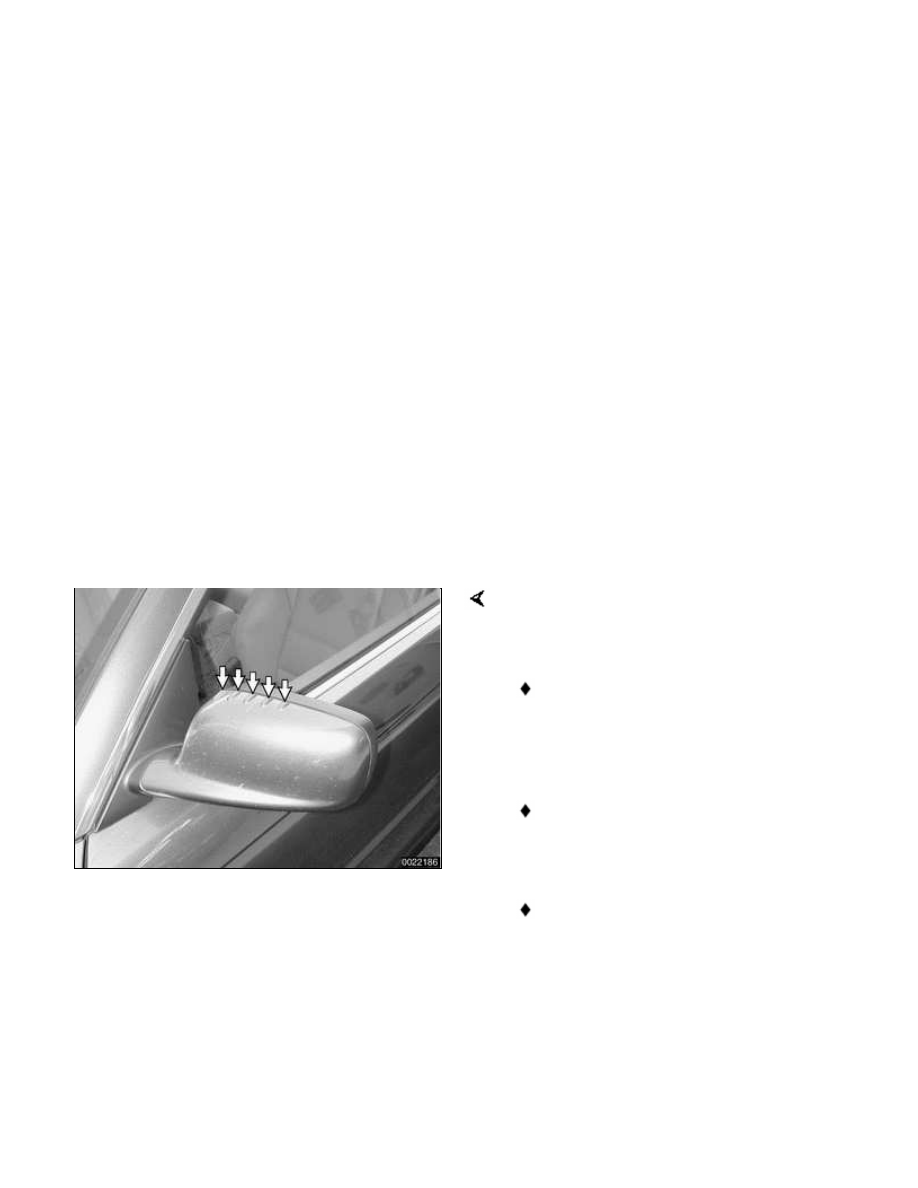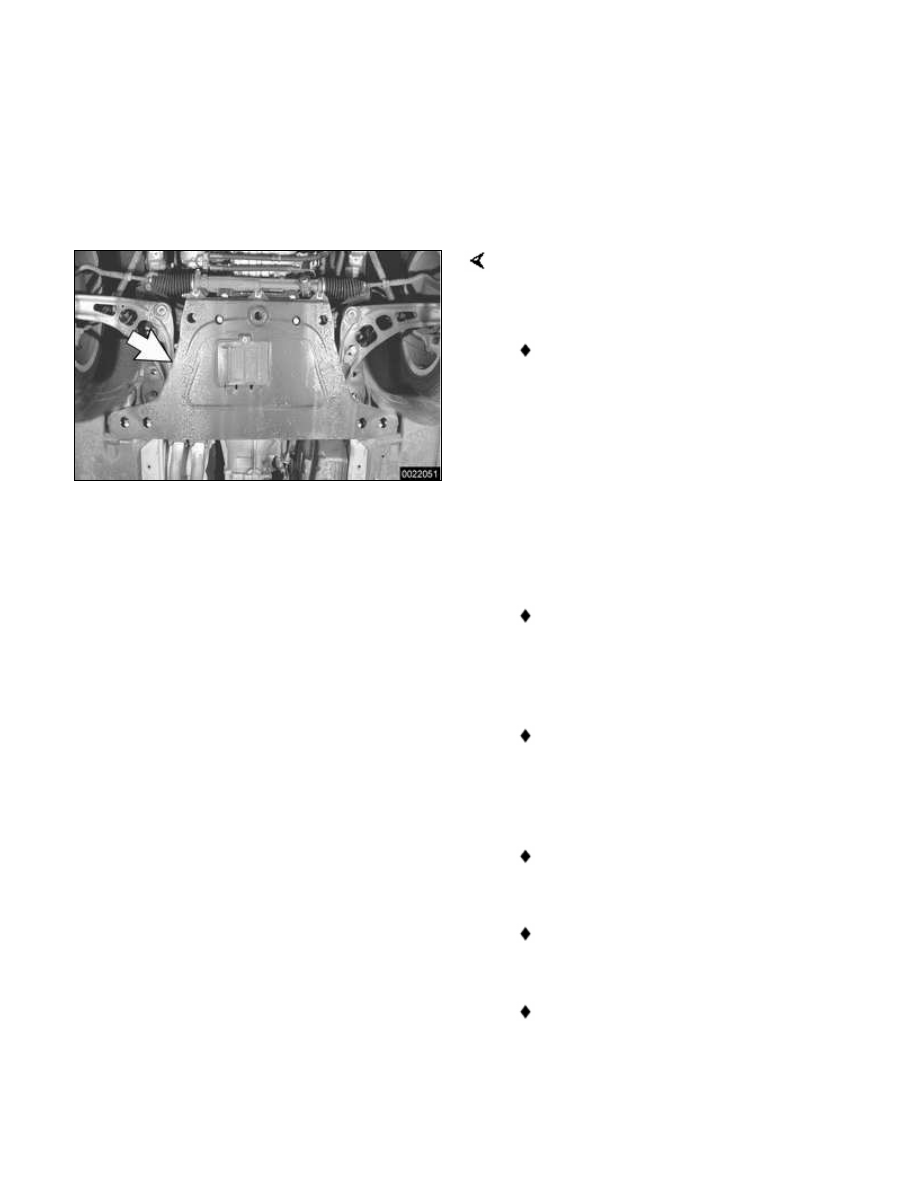BMW 3 (E46). Manual — part 182

The E46 body shell was designed so
that the vibrations of torsional twisting
and bending are separated into discrete
components and in the inaudible range.
The current Sedan design ensures that
the body twists at 29 hertz and bends at
26 hertz.
Exterior and aerodynamics
With its traditional styling features, such
as the kidney grille, circular headlights
behind a glass cover (for reasons of
streamlining), and the "kick" in the
rearmost roof pillar (C-pillar), the E46
can be immediately recognized as a
BMW.
Wind resistance. Windows bonded flush
to the body and the guided flow of
cooling air into the engine compartment
provide a good coefficient of drag (C
d
).
E46 cars have been designed for
balanced aerodynamics but not
necessarily an extremely low C
d
.
A low coefficient of lift (C
l
) promotes
stability at high speeds. The current
design has a front C
l
of 0.08 and a
rear C
l
of 0.10.
Windshield wipers are designed for
effectiveness at speeds up to and
beyond 200 kph (124 mph).
Body, window and exterior mirror
shapes have been refined for lower
wind noise and reduced soiling of
mirrors and windows. The Coupe's
side mirrors are specially shaped
and include five ribs (arrows) on
the top edge for further wind noise
reduction.
All this has resulted in a C
d
of

approximately 0.31 for the Sedan and
0.32 for the Coupe models.
Fenders. The exterior panels are
corrosion-resistant zinc coated
(galvanized) steel. The front fenders are
bolted on. For front fender replacement
information, see
410 Fenders, Engine
Hood
.
Bumpers. The front and rear bumpers
are clad in high quality deformable
plastic and provide protection with
virtually no damage to the bumper or the
vehicle at solid barrier impact speeds of
4 kph (2.5 mph). In addition to hydraulic
dampeners, which absorb the initial
impact energy, these bumpers are
backed by compressible tubes. These
deform in a controlled manner at impact
speeds greater than that for which
bumpers and hydraulic dampeners are
designed. This helps avoid expensive
damage to the body at impact speeds up
to 14 kph (9 mph).
Coupe models
The E46 Coupe is similar to the 4-door
Sedan, but has a more stretched and
sleeker appearance. Thus, with the
same wheelbase and identical length, it
looks different but still familiar.
The 2-door Coupe differs from the 4-door
(2-wheel drive) Sedan by a longer front
end, a flatter hood line with air slits, and
a roof 2.7 cm (1.1 in.) lower. Additional
differences include wider doors with
frameless windows, glass-covered
door-posts (B pillars) and a shorter and
lower trunk lid in the Coupe.
Convertible models
The E46 Convertible is an all-season
vehicle with a high level of functionality,
excellent interior comfort and acoustic

refinement. Interior materials and colors,
the soft top and the light-alloy wheels
have been carefully matched.
Although the automatic Convertible roof
is standard, a hard-top in body color with
heated rear window is available as an
option for the cold season.
The Convertible body structure includes
many passive safety refinements over its
fixed-top counterparts.
To achieve a more rigid underbody,
an aluminum reinforcement plate
(arrow) is bolted to the front
undercarriage and reinforcing struts
are bolted to the rear undercarriage.
Note:
The aluminum reinforcement plate is
used in all rear wheel drive E46 models
produced from December 2000.
Transverse seat support
reinforcements in the floor pan
accommodates the new
seat-integrated seat belts (SGS).
The windshield frame is reinforced
with stepped reinforcing tubes
which allow it to act as roll-over
protection.
The windshield is bonded into its
frame.
There are tubular door
reinforcements.
The rollover protection system is
tripped into position in a fraction of
second. With this feature, two bars
fully independent of each other
come up behind each rear-seat

backrest when the vehicle is in
danger of turning over.
A Convertible body normally flexes and
vibrates, transferring oscillations to the
passenger compartment. In the E46
Convertible, BMW utilizes a unique
battery tray in the trunk as a vibration
dampening system to counteract this
oscillation.
CAUTION!
The E46 Convertible requires a special
battery which is designed for constant
vibration.
Information for the Convertible top and
its related mechanisms can be found
541 Convertible Top
.
Sport Wagon
Introduced in 2000, the E46 Sport
Wagon is identical to the E46 Sedan
from the front bumper to the B pillar
(middle door-post). From the B pillar
back the Sport Wagon features:
Remodelled rear doors
Tail gate and hinge mechanism
Rear (tail gate) window that flips up
to open, independent from the
tailgate, held open by compact
torsional coil springs
New rear bumper
Roof rails (optional equipment)
Structural, safety and comfort features in
the Sport Wagon are comparable to the
E46 Sedan and Coupe.

Нет комментариевНе стесняйтесь поделиться с нами вашим ценным мнением.
Текст